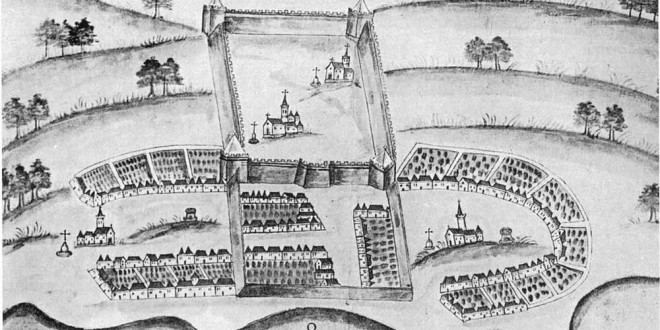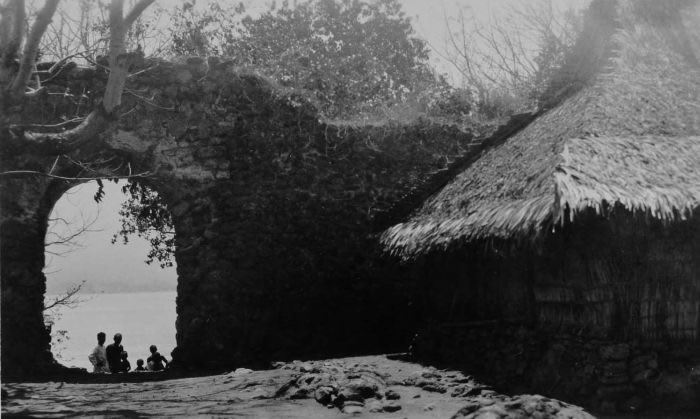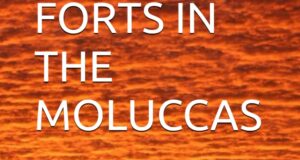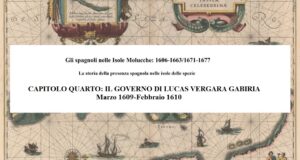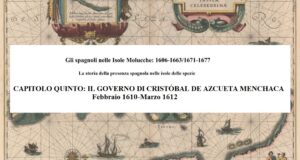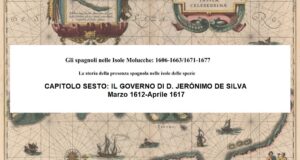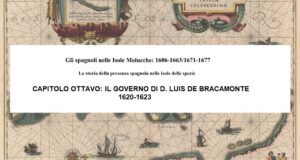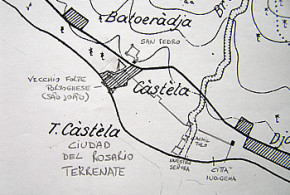Written by Marco Ramerini. English text revision by Dietrich Köster.
SOLOR AND THE LESSER SUNDA ISLANDS
The early Portuguese contact with these islands was in the years about the 1520s. They frequented these islands mainly to purchase sandalwood. The early traders established only temporary warehouses. They did not build permanent trading posts, farms or fortresses, because this task was left to the Dominican missionaries. In 1561 four Dominican friars under the orders of Brother António da Cruz left Malacca to preach the Gospel on those islands. They settled on Solor. The friars had a noticeable success in the conversions. In order to protect their spiritual work from the enemies, they built a stone fortress at Solor in 1566.
Within the fort were built the friars’ dormitory, a seminary (in 1600 it contained 50 pupils) and the church of Nossa Senhora da Piedade reserved to the Portuguese. The Portuguese captain resided in a tower. On the left side of the fort a native village was built adjacent to the church of São João Baptista. A few years later the church of Misericórdia was built outside the fort near the sea. New conversions were also realized on the nearby islands of Adonara and Flores.
In the island of Ende Minor the friars built a fort (1595) and within its walls the church of São Domingos was built. The converted indigenous population settled in the vicinity of the fort, where three native villages were founded. Numbas, close to the fortress; Currolalas on the left side with the church of Santa Catarina de Siena; and Charaboro on the right side with the church of Santa Maria Madalena. The first commander of the fortress of Ende was capitão (captain) Pero Carvalhais.
By 1599 the Dominicans had built as many as 18 churches on the Solor islands:
SOLOR: – Nossa Senhora da Piedade, inside the fortress. – São João Baptista, on the left of the fort, was the native’s church. – Misericordia, in the village of Laboiana. – São João Evangelista, in the village of Lamaqueira; it was destroyed in 1598. – Madre de Deus, in the village of Guno.
ENDE: – São Domingos, inside the fort. – Santa Catarina de Siena, in the village of Currolalas. – Santa Maria Madalena, in the village of Charaboro.
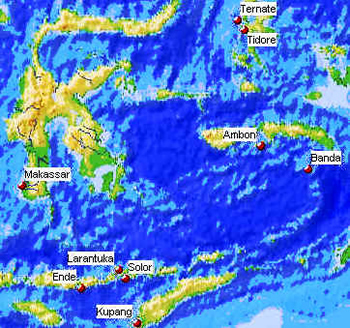
The Portuguese settlements on the Lesser Sunda islands and on the Moluccas (1500-1600). Author Marco Ramerini
FLORES: – São Lourenço, in the village of Lavunama. – Nossa Senhora de Esperança, in the village of Boibalo. – Nossa Senhora, in the village of Larantuca. – Santa Luzia, in the village of Sicà. – name unknown, in the village of Pagà. – Nossa Senhora de Assunção, in the village of Quevà. – São Pedro Martir, in the village of Lena. – Nossa Senhora da Boa Viagem, on the beach of Dondo, but it was neglected a short time after being built.
ADONARA: – Espírito Santo in the village of Cramà. – name unknown in the village of Lamala, destroyed a short time after a rebellion.
On 27 January 1613 a Dutch fleet appeared off Solor. The Portuguese captain Manuel Alvares had 30 Portuguese and 1000 natives at his disposal to defend the place. After nearly 3 months of siege the Dutch conquered the Solor fortress on 18 April 1613. They renamed it Fort Henricus.
In 1615 (?) the Dutch fled from the fort, but in 1618 they reoccupied it. Again in 1629-30, as the Dutch left Solor, the Portuguese wasted no time and occupied Solor again in 1630. However, in 1636 they left Solor and it remained deserted till the Dutch returned again in 1646.
The Dominicans moved their headquarters to Larantuka (Flores) in 1613. This was the center of the Portuguese in the Lesser Sunda islands up to 1662, when the headquarters were moved to Lifau (today Oecussi in Timor).
BIBLIOGRAPHY:
– Boxer,Ch.R. “Francisco Vieira de Figueiredo: a Portuguese merchant-adventurer in South East Asia, 1624-1667” 118 pp. Martinus Nijhoff 1967, ‘s-Gravenhage, The Netherlands. The adventurous history of the life of Francisco Vieira de Figueiredo in Makassar and Larantuka.
– Kartodirdjo, Sartorio “Religious and economic aspects of Portuguese-Indonesian relations”, in: STUDIA N° 29, pp. 175 – 196, 1970, Lisbon, Portugal.
– Pinto da França, A. “Influência Portuguesa na Indonésia” in: STUDIA N° 33, pp. 161-234, 1971, Lisbon, Portugal.
– Villiers, J. “As derradeiras do mundo: The Dominican Mission and the Sandalwood trade in the Lesser Sunda Islands in the sixteenth and seventeenth centuries” In: Various Authors “II Seminário Internacional de História Indo – Portuguesa” pp. 572 – 600 IICT & CEHCA, 1985, Lisbon, Portugal.
 Colonial Voyage The website dedicated to the Colonial History
Colonial Voyage The website dedicated to the Colonial History
